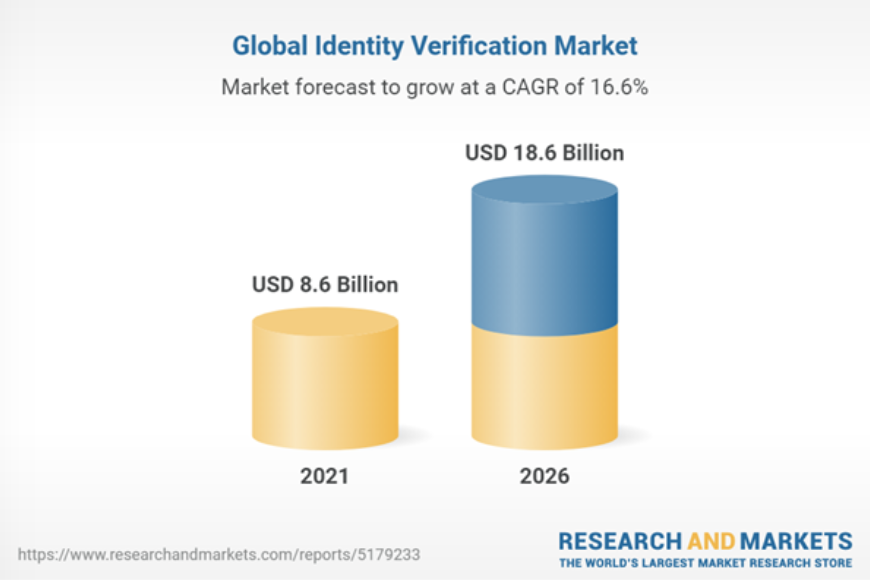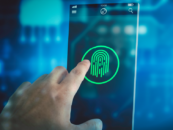
European Financial Services Providers, Banks Embrace Biometric Authentication
by Fintechnews Switzerland February 21, 2022In Europe, financial services companies and banks are embracing biometrics, actively partnering with tech vendors and software developers to improve digital onboarding experiences, strengthen compliance functions, and enhance fraud prevention.
Biometric authentication techniques, which use a person’s unique biological characteristics such as their fingerprints, facial features and voice, to verify they are who they say they are, are fast becoming the go-to methods to verify one’s identity.
In the banking sector, the use of biometric authentication systems appears to have increased since the beginning of COVID-19, but the past year has seen an acceleration of the trend as financial institutions ramp up efforts to provide their customers with a superior digital-first user experience and enhance fraud prevention.
Just this month, Jumio, a provider of end-to-end identity orchestration, digital know-your-customer (KYC), and anti-money laundering (AML) solutions, announced that it signed Nationwide Building Society as a new customer. Based in the UK, Nationwide Building Society is said to be the world’s largest mutual building society.
The partnership saw Jumio’s technology being integrated into the British mutual financial institution’s workflow, allowing it to tap capabilities such as artificial intelligence (AI), machine learning (ML), biometrics and liveness detection to determine if an identity document is authentic and belongs to the user, thus streamlining KYC processes.
Another announcement made in February 2022 was the partnership between Ondato, the provider of an end-to-end KYC management platform, and Satchel, a European electronic money institution (EMI) providing business- and consumer-level accounts, cards, and other financial services.
The collaboration seeks to strengthen Satchel’s KYC, AML, and CFT compliance procedures by embedding Ondato’s automated identity verification services across its banking platform. Not only that, but it also aims to improve operational efficiency and add another layer of fraud protection to Satchel’s business and retail customers, the EMI said in a post.
Finally, iDenfy, an identity verification and fraud prevention specialist, said earlier this month that it signed the European Merchant Bank as a new customer. European Merchant Bank, a digital bank licensed by the European Central Bank (ECB), will be using iDenfy’s selfie biometrics and related services to ensure compliance and security, the companies said.
iDenfy claims it has signed over 300 partners in various industries worldwide since its beginning in 2017.
Increase in digital fraud drives adoption of biometrics authentication
These recent developments come amidst a sharp increase in digital fraud brought about by the COVID-19 pandemic and the resulting shift to digital channels.
A November 2021 report by the European Payments Council shows that social engineering attacks and phishing attempts have increased over the years as techniques evolve. Also, malware remains a major threat, with ransomware in particular being on the rise during the past year.
In 2019, fraudulent transactions using cards issued within SEPA and acquired worldwide amounted to EUR 1.87 billion in 2019, the ECB estimates. 80% of that value resulted from card-not-present (CNP) transactions or payments via the Internet, mail or phone, reflective of the recent surge in e-commerce activity.
Experts have identified the large-scale remote working models and the increase in customers using non-branch banking channels as the key reasons behind the rise in fraud incidents in the banking sector, indicating that more needs to be done to protect customers in the digital age.
In 2021, the global identity verification market was worth US$8.6 billion, one research company estimates. Between 2021 and 2026, the market is projected to grow at a compound annual growth rate (CAGR) of 16.6% to reach US$18.6 billion.

Global identity verification market, Source: Research and Markets, Dec 2021
During the forecast period, biometrics are set to grow at the highest rate due to the increasing inherent demand from customers’ end for seamless onboarding, compliance management, and fraud prevention.
Other market drivers include increasing digitization initiatives, rising fraudulent activities and identity theft, and Increasing use cases of digital identities across different verticals.





